Orbicella faveolata
Orbicella faveolata is an important reef-building coral that forms large mountainous colonies. Juvenile corals are rather mundane, while adult colonies can grow to an impressive size.
Orbicella grows by encrusting. A new colony can start from a single polyp which grows outward from the base. You can see a slightly lighter color on the growing edge of the colony where new polyps are emerging.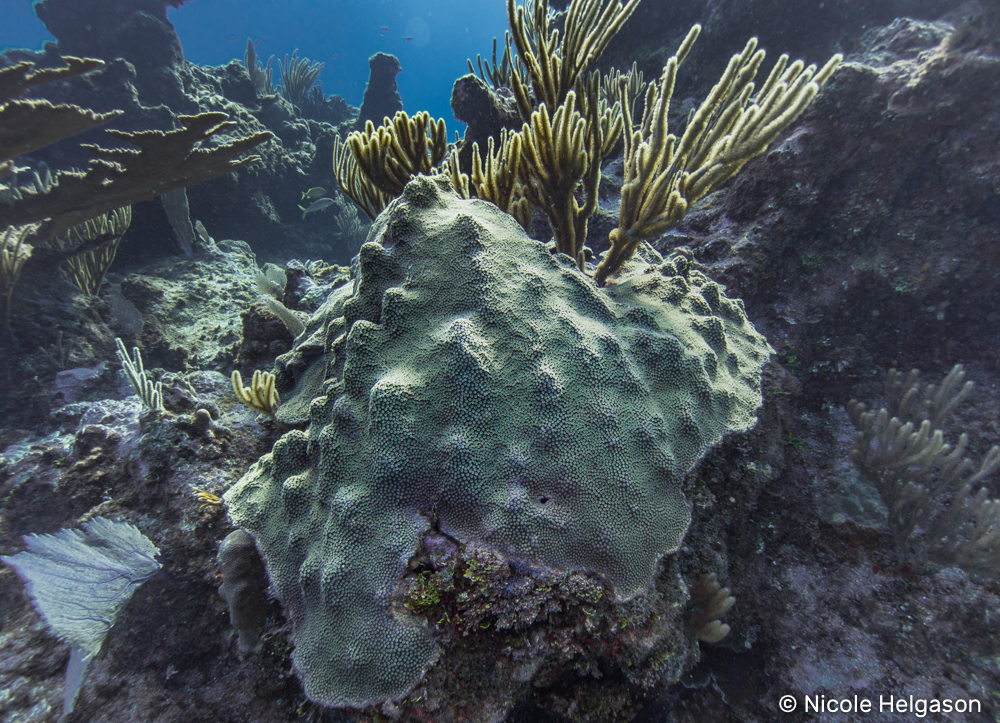
Orbicella grows into thick hardy colonies which make the ideal candidate for fragmentation and coral restoration. Small 15-20mm fragments can be cut from adult colonies using a diamond band saw. These fragments can be glued onto ceramic frag plugs and grown in saltwater until they double or triple in size.
At this point, tiny Orbicella colonies can be transplanted back to the reef. As they grow their skeletons add a considerable mass to the reef, and over time they can help stabilize loose rocks or decaying reef structure.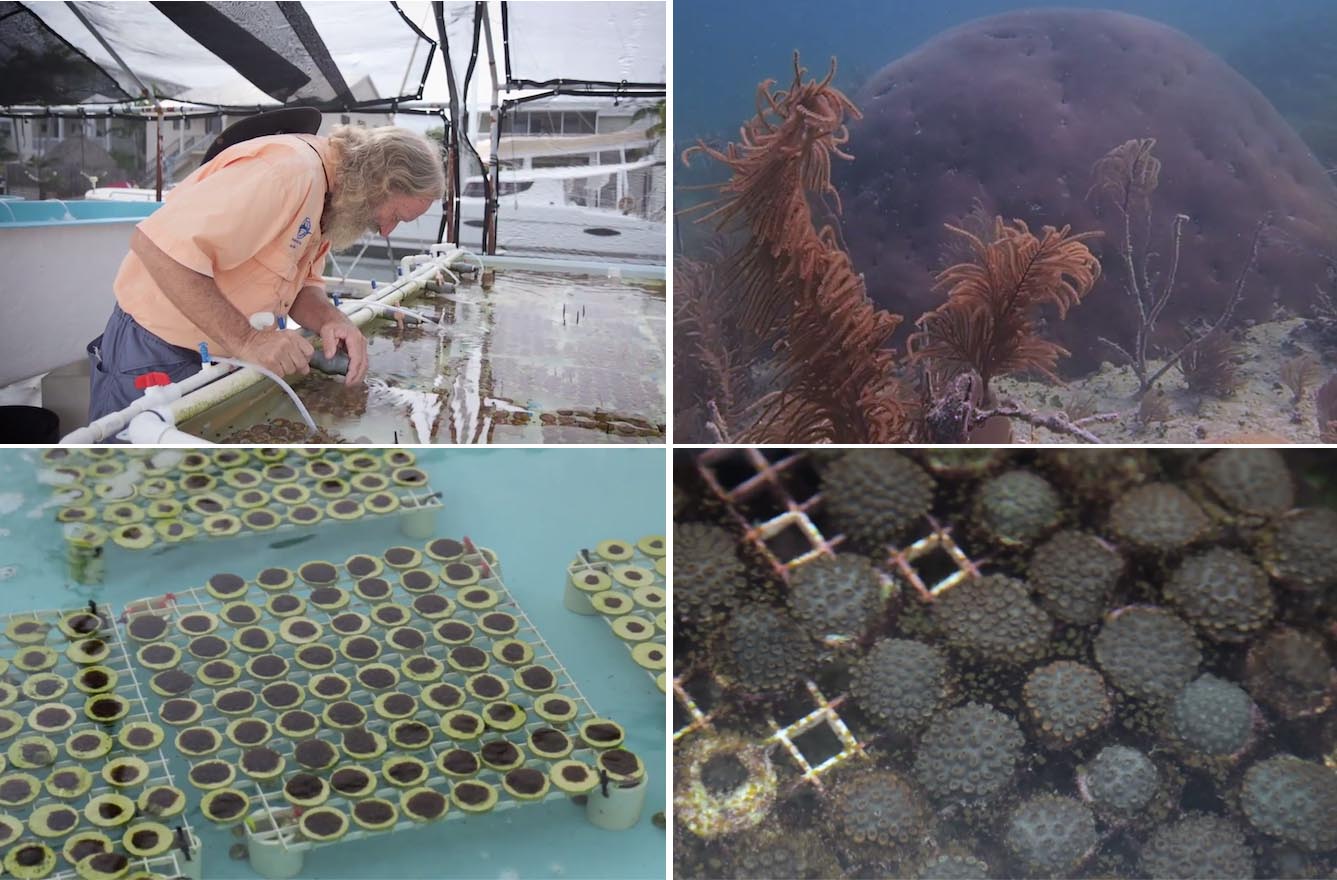
Mountainous Star Coral
The common name for this coral is Mountainous Star Coral because of it’s size and that it creates characteristic peaks and ridges like a mountain. Polyps are small usually 5mm across. When polyps are retracted Orbicella corallites have tiny grooves giving it a star like appearance.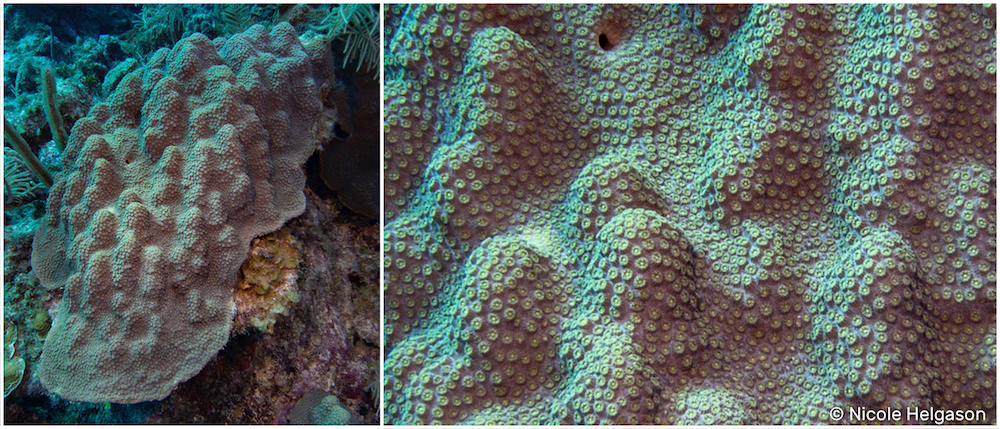
There are three species of Orbicella. O. faveolata, O. annularis, and O. franksi. Don’t worry if you can’t tell the three apart just yet. If this is your first time trying to identify Orbicella, instead focus on identifying the polyps and corallites. Once you’re a master at spotting Orbicella, start trying to notice the difference between the three species.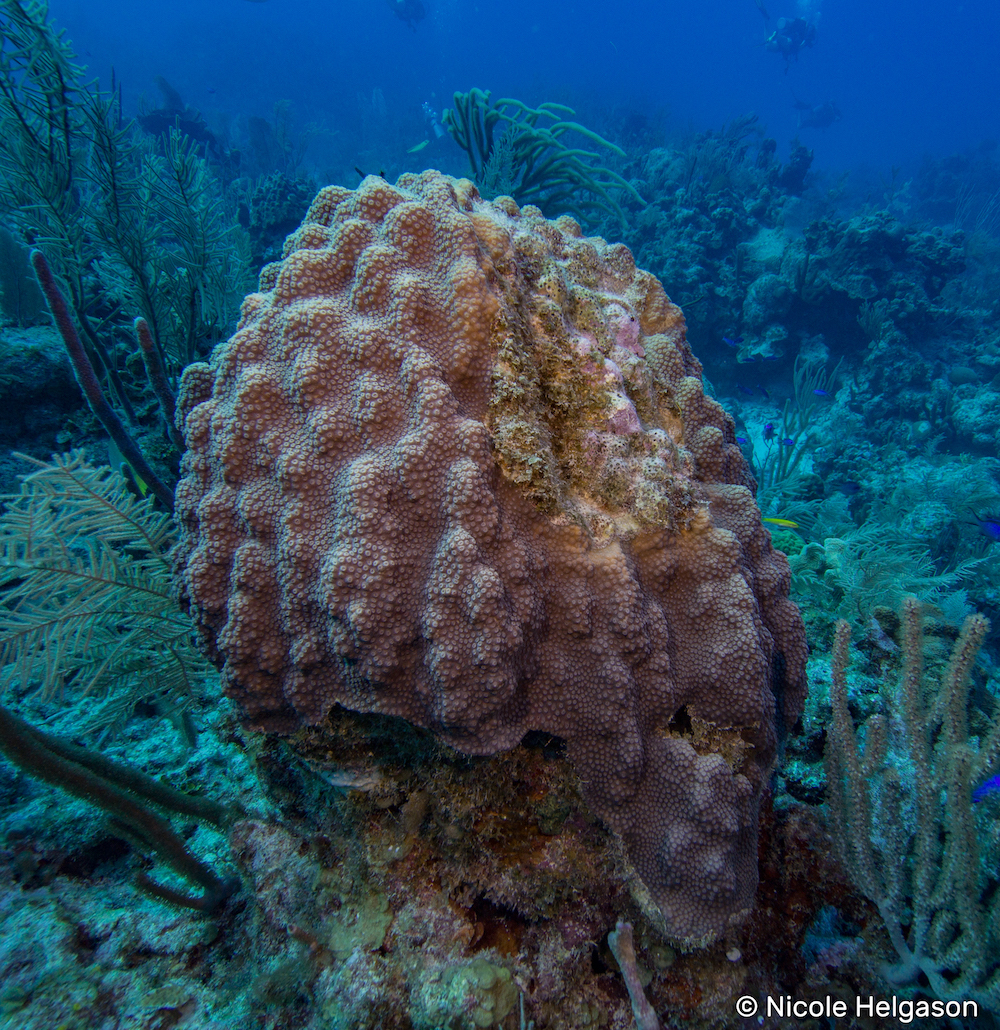
Orbicella is coral which could be overlooked. From a few meters away you might think this coral is just a rock, or simply consider it as part of the reef. Divers are often more focused on looking for fish, turtles, rays, and eels than trying to describe coral.
Even divemasters and instructors will tend to know the perfect hideouts where to spot these critters, while not being able to name a handful of coral species. I myself was guilty of this which is what inspired me to write about coral identification.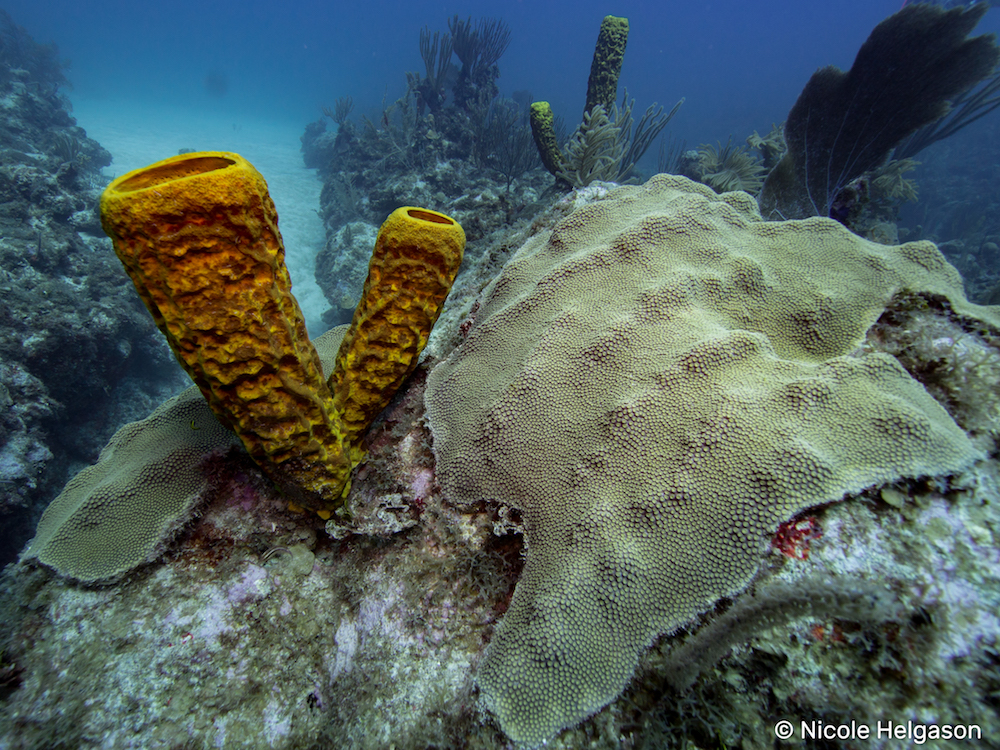
Until recently Orbicella was classified as part of the Montastrea family. You can still find this coral listed as Montastrea faveolata, however, the current description is Orbicella. You may still find this coral listed as Montastrea especially in older printed coral guides.
The Coral Diaries series is a list of corals we have seen while diving around the world. We’ve created this series so that you can learn more about corals, and how to identify them on the reef. We encourage you to send us your coral pictures and leave a comment in the section below to learn more about the interesting species you’ve found while diving.


